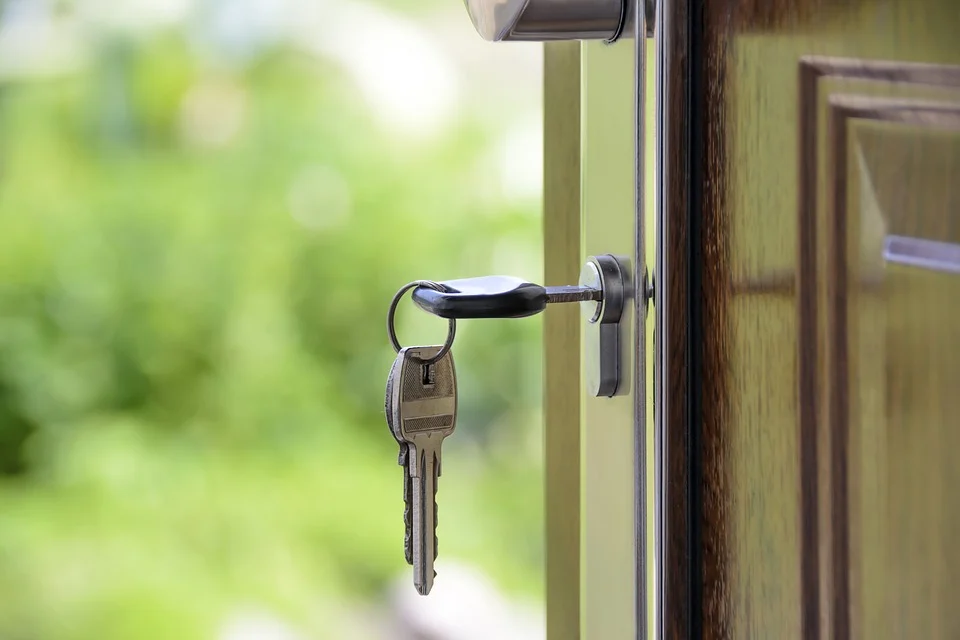If you’ve been a homeowner for over a few years, there comes a time when you seriously have to consider what happens to your property when you die. It’s not a very cheerful topic but crucial nonetheless. For older people, plans may already exist in their general will as to who gets to have their assets.
However, the probate process can prove cumbersome and expensive. If the property owner died without a will, the situation could be worse, leaving things to state inheritance laws.
Putting your home in trust arrangements might be a solution to these challenges. However, before you sign any trust papers, it’s vital to seek legal advice. Below, we’ve explained the fundamentals of putting a home in a trust and other details you need to know.
What’s a Trust?
A trust is a legal arrangement that enables you to transfer property ownership to another person. Typically, the trust involves a grantor who owns the property and would like to give it to someone else. Then there’s the beneficiary who receives the transferred property. A trustee would also be on hand to oversee the transfer process, holding the assets according to the grantor’s instructions.
All that might sound cumbersome, especially when it’s your first time hearing about trusts. Here’s an example: you have some money you wish to give to a friend to buy a specific item. However, you don’t want to give it to them right away, as they might spend the cash on something else. Therefore you get a third person to hold the money for a certain period before releasing it to the intended friend.
In the scenario above, you’re the grantor while your friend is the beneficiary. The third person is the trustee who completes the trust. A legal trust is a more official form of this arrangement, as you draw up legal trust papers using an attorney.
Types of Trust
There are several varieties of trust you can find across different jurisdictions. However, only two of them are relevant, as far as estate planning and management goes.
Revocable Trust
A revocable trust supports alterations and modifications as long as the property owner is alive. In such an arrangement, you list yourself as both the grantor prime trustee and have the liberty to change the terms in the trust. You could also call for the plan’s termination if you wish.
Furthermore, revocable living trust dictates that you name a second person to take over trustee duties when you pass away. Upon your demise, the revocable trust terms become irrevocable. According to the instructions given in the initial terms, the successive trustee takes over ownership and management of the home and other assets.
It’s important to note that while a revocable living trust gives you ample access to your assets while you’re alive, it doesn’t shield you from estate taxes. Also, the properties are used to service any debt you might leave behind.
Irrevocable Trust
An irrevocable trust doesn’t allow for alterations or termination once it’s in motion. You also have to relinquish your homeownership and control to a trustee. Effectively, the property is no longer yours, once you sign an irrevocable trust.
Since the asset’s ownership gets transferred to another entity, they no longer belong in your estate, and by extension, you won’t have to pay estate taxes on them. Assets in an irrevocable trust are also immune to credit servicing.
However, it’s essential to consider the permanence of an irrevocable trust and see if it’s something you need. You’d legally lose all access to the house and any other assets you list under an irrevocable trust. The recommendation is to consult an attorney or a financial advisor on the trust type you’d need in your case.

Reasons for Putting a Home in a Trust
If you’re having a conversation about putting your home in a trust with your financial advisor for the first time, you might wonder about the purpose of it all. Are there any peculiarities to a trust? What if I’ve got other arrangements like a valid will? You must understand that every property has to get through a probate process when the owner dies.
The probate process happens regardless of if you have a will or not. It involves valuing the assets and using them to offset any debt or taxes the deceased owner might have. Afterward, whatever’s left gets shared according to the will’s directives. If they don’t leave a will, the assets get distributed by the state’s inheritance and intestate succession laws.
Are you still unsure about putting your home in a trust? Learning its advantages may assist you in making up your mind. Some clear merits to having a trust for your property include:
Probate Immunity
Properties put in a trust can avoid probate entirely, and this arrangement spares the state from identifying and sharing the assets to the supposed rightful beneficiaries. Probates would also use the assets to service whatever debt or taxes the owner might have before passing on.
If you’ve got a relatively large estate, the probate process could be lengthy and costly for the beneficiaries and your family when you die. Having the estate or a part of it in a trust shields them from probate, and the beneficiaries can take over management in a very short period after you pass away.
By extension, a trust is a suitable option if you’d like to avoid multistate probate. If your estate spans two or more states, each asset in those areas will go through independent probate according to the jurisdictions there. This can be a nightmare for your estate executor.
Increased Privacy
One of the key features of the probate process is that your entire estate is on public record. On the other hand, trusts keep that information private, and the transfer of ownership from the grantor to the beneficiary isn’t a public affair.
Protection When Incapacitated
You don’t have to die for the benefits of a trust to kick in. A trust (a revocable one) can protect your assets when you’re incapacitated and save the beneficiaries from conservatorship.
A conservatorship happens when a court appoints a guardian to manage an incapacitated person’s estate for them. This could be an issue for your family, especially when the appointed guardian isn’t someone you’d prefer. However, it occurs only when you don’t have a trust.
Putting your home in a trust protects your family from court matters when you become incapacitated. If it’s a revocable trust, all that needs to happen is to have the designated successor trustee step in for you.
Drawbacks of the Probate Process
Probate processes are lengthy and costly for all parties involved. In many cases, the probate could last for months for simple homes. Larger estates could take years, and if the parties contest the will in court, the probate process could drag on for much longer. That’s not to mention the hefty legal and administrative fees.
Putting your home in a trust cuts out these inconveniences. Essentially, you assign yourself as the trustee and another entity as the successor trustee who takes over after you die. Your designated trustee then has the legal obligation to distribute the assets the way you’ve instructed in the trust.
This gives you peace of mind knowing that your home will get passed down to your beneficiaries the way you want it to. Also, those beneficiaries won’t have to jump through hoops or go through lengthy legal processes before gaining ownership. In unique cases, you may activate a trust when you’re ill and incapacitated.
Which do You Need: a Will or Trust?
Legally, a trust is much similar to a will in that they specify what happens to an individual’s estate after their death. However, trusts get the property into the beneficiary’s hands faster than a will. On the other hand, a will is cheaper than setting up a trust.
Some of the other drawbacks to putting your home in a trust include:
Added Legal Overhead
You must understand the extra paperwork involved should you decide to set up a trust for your home. For starters, you’d have to draw up a trust deed stating that the property is now under yours or someone else’s ownership, as the case may be. That would mean the property title has to change to reflect the transfer of ownership.
You also have to specify the trust’s beneficiaries and information on how the assets will get to them after you pass away. While all of the legal overhead for a trust is much less than a probate process, it’s worth mentioning nonetheless.
Continuous Record Keeping
Keeping your income and tax records is essential if you have your property in a trust. That’s because the income you make can go under personal tax returns since you’re the home’s grantor and trustee.
However, if you only have a part of your estate in trust, or you frequently transfer assets in and out of it, you must have a good habit of keeping records. You have to keep separate income tax records for the assets within and outside the trust.
Every transaction under the trust’s deed must also be on record. Generally, the process is straightforward if you’ve only recently put a home in a trust. However, you might have to pay more attention as the years go by, as you risk forgetting details.
Overall, it comes down to the preferences, needs, and considerations of your family. Proper estate planning uses both options.
You could put your estate’s major assets (i.e., house, land, etc.) in a trust and leave the rest for a will to decide. That way, beneficiaries quickly get the most crucial property while the remaining estate goes through the probate process.

Steps to Putting Your Home in a Trust
-
Trust Creation
The first step to putting your house in a trust is to create one. You have to pick between the revocable or irrevocable option.
-
Trustee/Beneficiary Specification
If you’ve chosen the revocable living trust option, the next step is to choose your trustees. Essentially, you’ll be the prime trustee, while you’ll pick a successor trustee.
You’ll specify your beneficiaries in the document as well. It’s worth mentioning that you can pick anyone to be your successor trustee: it could be a family member or friend. You must ensure that you trust the individual. In a case where you prefer elaborate estate planning, your successor trustee could be a professional trust company or a real estate attorney.
-
Formation of the Trust Agreement
The next thing to do is to specify the trust agreement. Typically, this document contains the trust’s instructions and other details. You could use generic trust agreement templates available online or get a lawyer to draw one up for you. Whichever one you go for, it must carry your signature, given in the presence of a notary public for the trust to be valid.
-
Property Deed Fill-out
The last step to moving your home and other assets into a trust is filling out the property deed. This form is state-specific. You could check online for property deed forms relevant to where you live or hire an attorney to complete the application for you.
As with the trust agreement documents, the property deeds need your signature, given a notary public’s presence. Furthermore, you’ll need to give a record of the deed to your county’s recorder or local court clerk’s office.
Wrapping Up
It’s best to plan for the inevitability of death when you have a home or an estate you want to leave to specific beneficiaries. While having a will or leaving things to the state might seem convenient, the settlement process to them may be intensive, leaving your family stressed from the legal process after your passing.
A trust alleviates these weaknesses and grants control to your beneficiaries much sooner. However, there are crucial aspects you must understand about the process before you make your decision.
Read through the information we’ve discussed above and ask your realtor essential questions before you contact a legal representative.

In her 25-year career, Steph Wilkinson has been involved in the acquisition, marketing and sales of over $3 Billion dollars of residential real estate. A number of years ago, Steph transitioned into Brokerage Leadership for National real estate brands and tech start-ups. She has served as a Business Strategist for real estate agents and brokerages alike and is also a real estate coach and trainer. In her new role with the Iconic Team, Steph will be responsible for the growth of the team and will be working with all of our agents to increase their productivity and bottom line.




